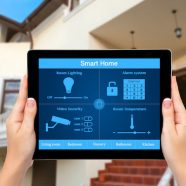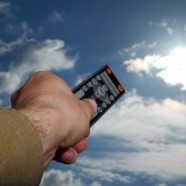Maintaining a Computerized Lighting System at Your Home or Business
The computerized lighting system concept is a small part of a new technology known as the Internet of Things (IoT). It’s a large group of systems that gather information from many devices, each of which has a sensor. These devices don’t really need the internet to work, as they mostly take advantage of wireless connections or over a wired LAN, or local area network. Among the many devices included in the Internet of Things are:
- Home appliances
- Building operations systems
- Production equipment
- Home or business lighting systems
Computerized Lighting Systems Advantages
The key to saving money and power on any electronic system is maintenance. Maintaining your appliances and devices on a regular basis allows you to prevent problems from happening, as well as fixing problems when they’re small and repair costs are less expensive. Electrical contractors following a traditional maintenance schedule will change bulbs, check electrical wiring, look for signs of wear, and replace parts as they wear out. This works to keep costs low and electrical systems running. But with computerized lighting systems, you can go one step further.
Because the individual parts in these systems each have a sensor that talks to other sensors in the group, your contractor has the ability to find out information about your system at a much more rapid pace. If your office lights are dimming at a certain time of the day, he can tell whether it has to do with other building systems that kick on at the same time, draining some of the available power, or if you have a light fixture that’s going to need replacing. And he can tell before he even leaves the shop, because your system will have sent an alert signal, letting him know about the problem. All without ever having to inspect your lamps and wiring.
What Your Electrician Will Look For
Electrical maintenance in south Florida is a challenge, because of all the outages we have in this area. Between older electrical systems in our communities and the high volume of electrical storms all year round, we have a higher incidence of electrical problems that most of the rest of the country. This makes it even more crucial for your electrical contractor to maintain your system on a regular basis.
A computerized system can offer a lot of useful information. Most systems can offer multiple types of information from the same system, such as hours used, power surges, and average power usage. All systems can be set to trigger an alert from multiple causes, and require a different response for each problem. Systems can automatically call your contractor and generate a work order, in effect calling in an emergency before one actually arises. They can even identify potential problems for your contractor to discuss with you, defining future work to allow you to budget accordingly.
Condition Based Management (CBM)
Having a system that calls for a repair before a problem even arises may sound like a way to increase the amount of contractor visits, but just the opposite situation actually exists. Computerized systems create a concept called condition based management, or CBM. With a CBM system in place, most regular maintenance calls are no longer necessary. Your contractor only has to come out when something’s about to go wrong, and your system will tell him when it’s happening. He’ll still repair troubles before they become large problems, and he’ll still run some checks for wiring and other equipment, but for the most part your contractor will only show up when he’s really needed.
Read MoreHow Advanced Lighting Controls are Changing the Face of Commercial Lighting
You’ve heard of smart buildings and building management systems, but you might not have heard specifically of advanced lighting controls, or about how new technologies are making it possible to automate lighting and create more energy efficient spaces.
That is exactly what many companies are doing in commercial buildings, and as an electrical contractor in South Florida, we are excited to see how these commercial lighting advances can benefit our commercial and residential electrical customers.
How Advanced Lighting Controls Work
Lighting controls can be a simple as sensors and switches, or a much more complex system linking many different light fixtures and switches. In their simplest form, they may use day/night or photosensitive switches to manage lighting in a smaller commercial or residential building, but single fixtures or a series of many may also be routed though network bridges to digital management systems and integrated with other building management systems to allow for remote control.
That advanced technology offers so many exciting benefits, including exponential improvements in control, timing, and programming, as well as reporting and even remote control.
Essentially, as buildings have got smarter, so has the technology available to manage them, and today, the level of control over lighting and other systems can be as complex or simple as a building owner chooses. These controls are far superior on a granular level, and offer management possibilities that are as different to legacy system as, well, day and night!
What Are the Benefits of Advanced Lighting Controls?
Older, legacy, analog-based lighting controls were not much more flexible than the dimmer switches your parents or grandparents had in their 1970’s home. They were clunky and cumbersome, and they offered a limited range of settings and control.
Today, with the range of digital lighting controls to choose from, we can offer customers an almost infinite number of settings and a layered control system that allows for complex parameter setup.
That, in turn, can lead to greater energy efficiency in buildings, improved security and increased comfort for building occupants. Since these smart lighting systems also minimize operation time for lighting installations, they also reduce long-term maintenance costs for the buildings they are installed in.
Going Smart
For our commercial clients, going digital with lighting controls makes a lot of sense. The good news is that it does not have to mean a complete replacement of all of your current lighting systems. Many advanced lighting systems can be retrofitted to existing systems with minimal changes in wiring and equipment.
Customers who do choose to upgrade both their aging lighting equipment and the management system that runs them can take advantage of existing energy savings by utilizing advanced lighting equipment based on LED and other technologies to reap the maximum efficiency benefits.
Whether you choose to upgrade your lighting and your management system, or whether you retrofit your existing system now with a view to upgrading in the future, it is certainly an exciting time for lighting, and there are sure to be major leaps in management and control to come. An experienced electrical contractor in South Florida can provide all the advice and assistance you need.
Read MoreUnderstanding How Smart LED Solutions Work
Do you often forget to switch the lights off? Between the growing popularity of greener technology and the plain intelligence of using less expensive resources, smart LED solutions are fast becoming the best choice for new installations as well as business retrofits for all types of lighting. Much more than just plain LED retrofits, smart LED solutions are a complete system designed to manage lighting in your building, giving you the optimum in visibility along with the lowest possible energy costs. Smart LED lights are made up of a tripod of newer technologies, each of which relies on the other two to create the optimum method of energy usage.
Smart LED Lights
The main leg of the smart solutions tripod is the LED light bulbs themselves. LED retrofits themselves can save you extraordinary amounts of money on your energy bill. In general, they use 80 percent less energy than traditional light bulbs and, unlike short-life incandescents, LED bulbs last 25,000 to 50,000 hours. This means double savings, as you won’t have to replace your bulbs every couple of months like in a traditional lighting situation. Add to that the lack of frustration you’ll feel by knowing your bulbs won’t burn out exactly when you need them the most, and smart LED lights look more intelligent all the time.
Occupancy Sensors
Human beings are forgetful, and more energy is wasted through forgetting to turn off the lights than just about any other cause. Occupancy sensors seek to solve this problem by noticing when people are in a room and when they’ve left. Motion sensors are the most common method of telling when a person is in a room, and smart systems make use of them in almost every model. This doesn’t cover every situation, though, since people tend to sit still when watching television, reading books, or doing crafts and hobbies. To make up for this shortcoming in the motion sensors, advanced smart systems also include heat sensors to test when a live human body is in the vicinity. They can be set for different size beings so your cat doesn’t set off your lights all night long, but they still won’t turn off your reading light just as you’re getting to the most exciting part of your book. Knowing your smart LED lights will always be on, except when you don’t need them any more, is a touch of the future that can save you money today.
Daylighting Controls
Turning lights on and off depending on whether people are in the room is a great way to save money, but there are still times of the day when it makes no sense to turn on the lights at all. In the middle of the day in a room with plenty of windows, there’s no need to any type of lights to burn. On the other hand, in a room with one small window that faces east, evening might be a good time to start turning on some of the lamps. Daylighting controls have sensors that detect the amount of light already naturally in a room, then decides how much more artificial light is needed for normal human activities. Often attached to dimmers, this crucial part of a smart LED lighting system gradually adds light throughout the day as the room gets dimmer, and turns the lights off when the sun shines through the window.
Savings
While the savings found from using smart LED lights is significant, having a licensed, professional electrician install a smart LED solutions package in your home or business has the power to save almost 90 percent of the total energy usage formally found every month. Not only is this good business, as it saves a significant amount of money, it’s good for the environment because of the much smaller carbon footprint your building will leave.
Read More



Recent Comments